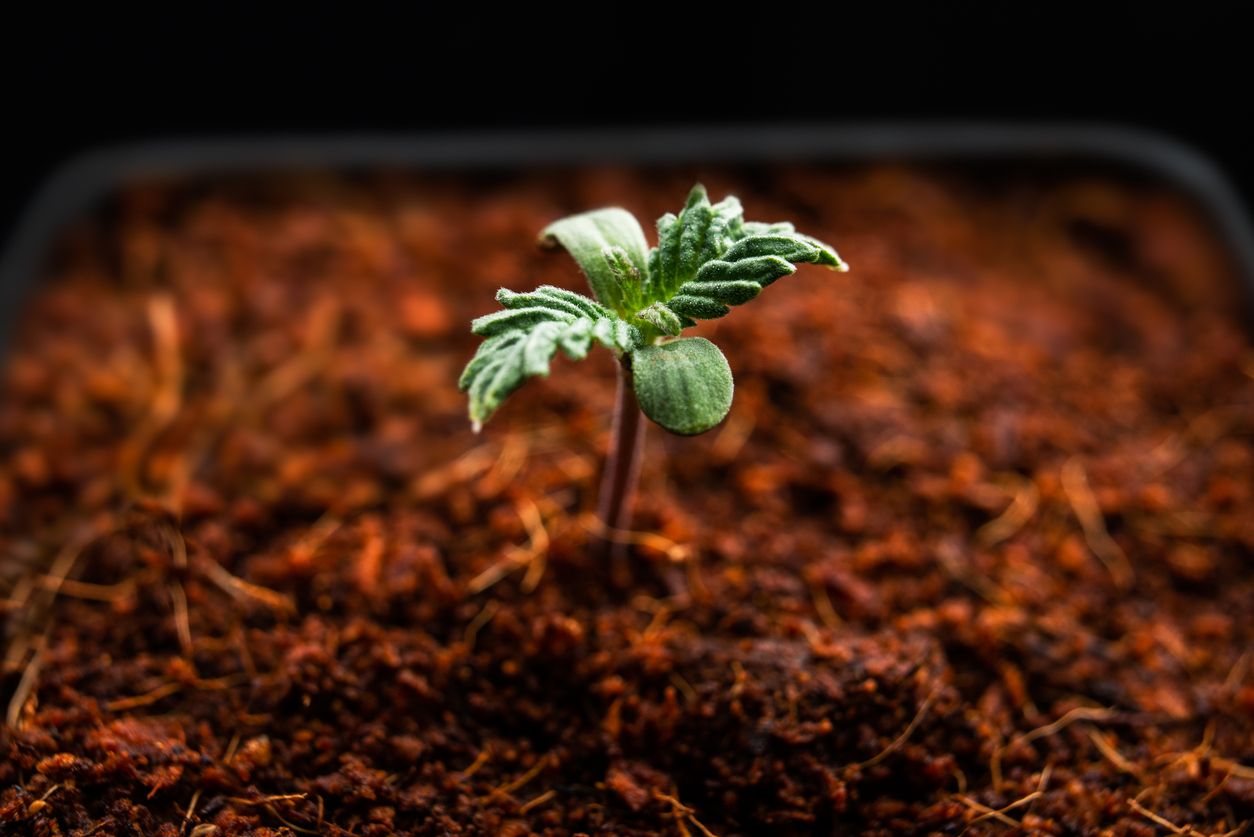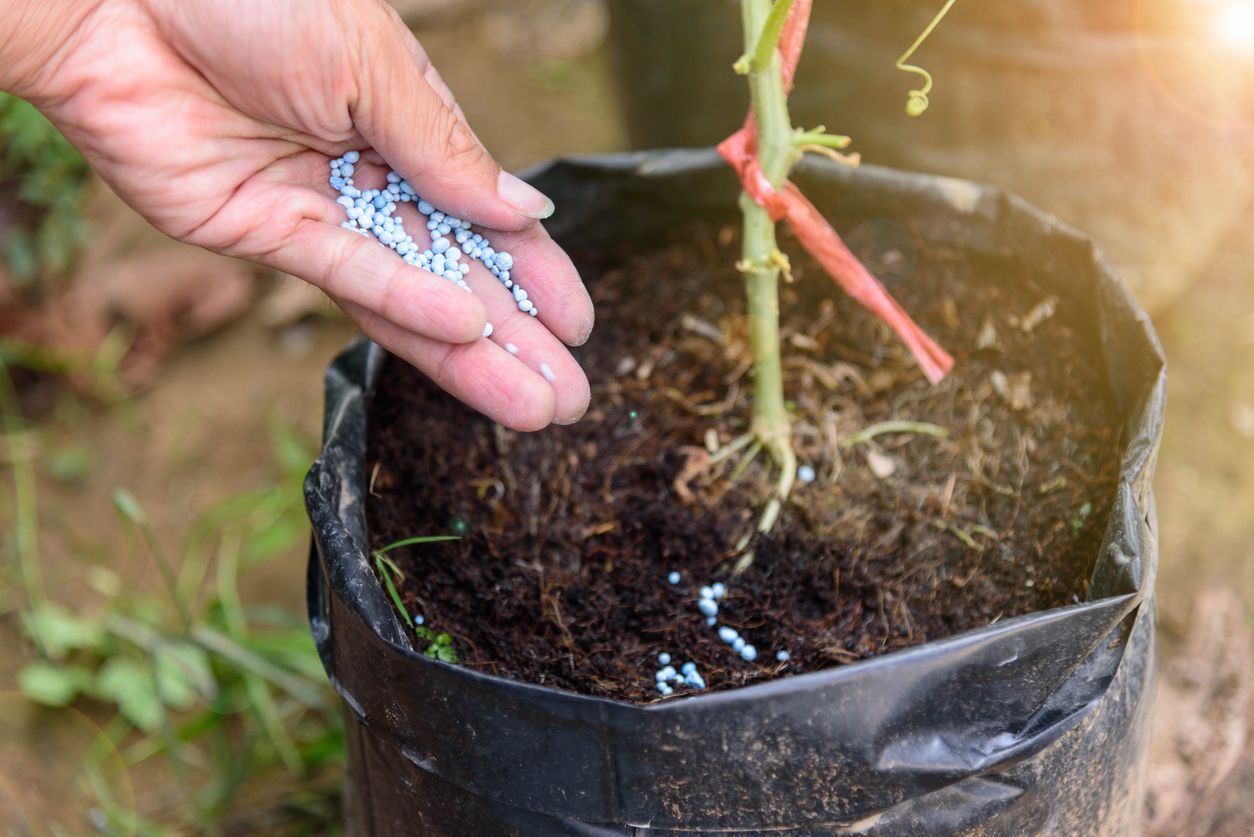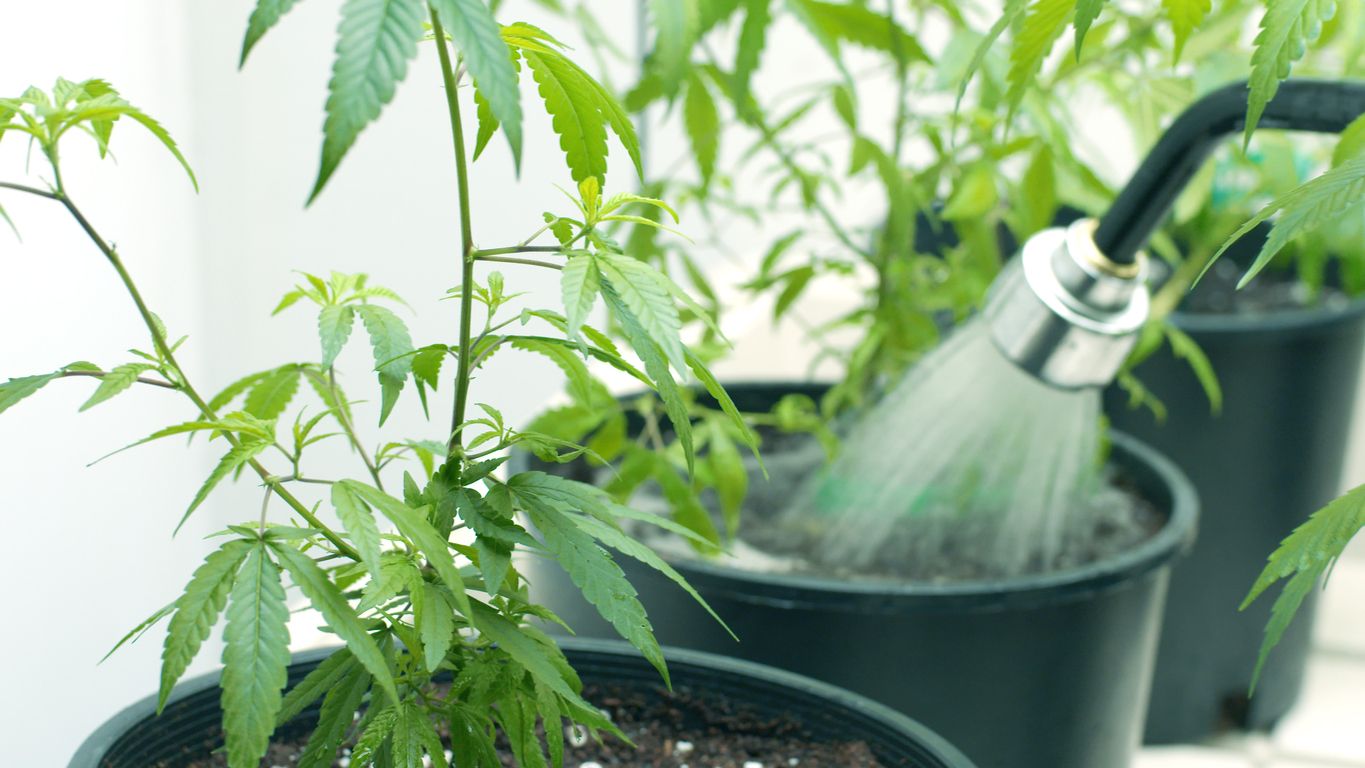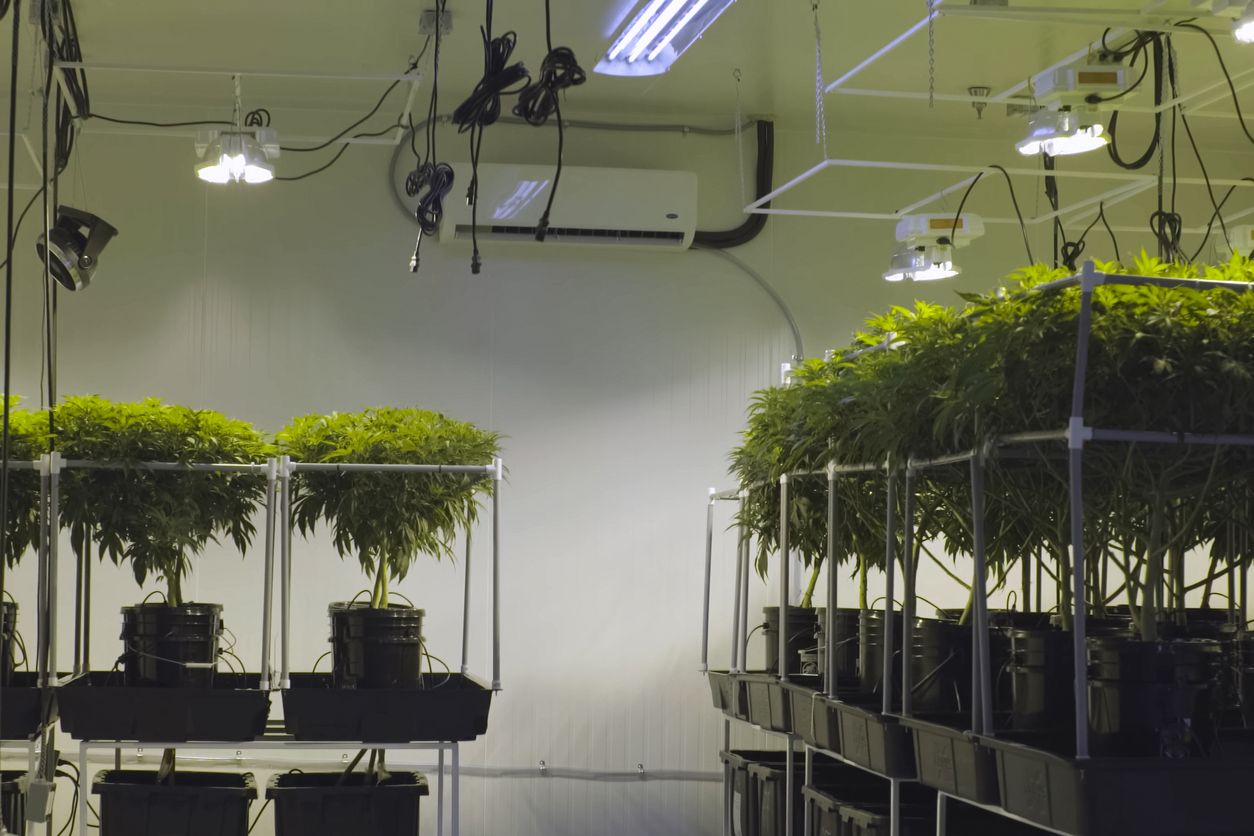Essential Nutrients for Growing Cannabis

Even the most experienced cultivators could use a bit of help from time to time, and one of the most useful products on the market today that can help is cannabis nutrients.
Intro to plant nutrients
Though the one-word description might deceive you into believing that cannabis nutrients are a one size fits all kind of product, this term describes a wide range of possibilities. Every single living plant on earth requires some form of nutrients to survive, just like we need food to keep going, your marijuana plant needs fuel to live and to thrive. Giving them more nutritious food will better their health, which is why it’s so important to learn all about cannabis nutrients, long before starting to grow.
Nutrients a cannabis plant needs
Cannabis plants require a special group of nutrients that are called macronutrients. Some are non-mineral based, like CO2, oxygen, hydrogen, and water, but the rest can be easily added by hand if you know where to start. These are the primary required mineral-based nutrients that cannabis plants need in their soil:
- Sulfur
- Nitrogen
- Magnesium
- Potassium
- Calcium
- Phosphorous
How to use nutrients
When searching for the best fertilizer for growing weed, there are more than a handful of options available to consider. Cannabis nutrients come in specialty formulas and pure mixtures that are distributed in different ways that all come with both drawbacks and benefits depending on your setup, budget, and the availability of products you might have access to. Here we will cover how often to fertilize weed plants and how to use 5 different kinds that are most widely used today.
1. Pellets
Pellets are a convenient marijuana fertilizer and are preferred by beginner growers who are not quite confident enough for liquid fertilizers or are unable to access their plants frequently enough to use them properly. Pellets are condensed and hardened nutrients that are slowly fed to the plant throughout their cycle of around 6 weeks.
Two of the most popular brands of pellets used on cannabis are Perlite and Vermiculite.
How to fertilize weed with pellets: If you are growing outdoors, then these pellets can be used much more freely, where you can place up to three of these around each plant. For growing indoors, the soil area is much smaller, so precision becomes necessary. One pellet per plant every 6 weeks is recommended for indoor grow rooms, where each plant have their own container.
2. Liquid nutrients
Liquid nutrients are the best fertilizer for growing weed. Though the process can require a few extra steps, such as testing soil PH levels, it is the only kind of marijuana fertilizer that allows you to adjust certain vitamins according to your plant’s specifics needs. Liquid plant food for cannabis can be used on both soil and hydroponic grow ops. Liquid nutrients for cannabis can be purchased either premixed or in individual containers that each have separate nutrients like calcium or phosphorus.
How to fertilize weed with liquid nutrients: This one is difficult to judge as the amount you require will depend on your setup and the kind of schedule you’ll want to follow. For more specific directions, check out our Liquid Nutrient Schedule list. If you are growing in soil, then liquid can and should be mixed into every jug of water you use to feed them.
3. Composting
Composting is used by combining it between 30%-50% of compost to soil ratio. It will act as a slow-release formula that will feed your plants throughout their life without any need for additional fertilizer later. Marijuana-friendly compost isn't much different than regular compost, with the only difference being a focus on balance between greens and browns that are added to your compost pile. Greens are leaves, grass clipping, and anything plant-based, and browns are paper, woodchips, straw, or cardboard, bat guano, cow dung, and more.
How to fertilize weed with composting: Ensure your compost pile is made up of 50% or less green material. Once your compost is ready to be used, mix it with regular soil. A mixture containing one-part compost and two parts soil, or one-part compost and one part soil is ideal. Do not exceed 50% or you will risk burning your plants. Once the two have been mixed, use it in any pot to grow from. As water is poured over it, the nutrients will slowly be released into the dirt which can then be absorbed through the plant’s root system.
4. Liquid fertilizer
Liquid fertilizer is a similar concept to liquid nutrients, with the most significant difference being that it is always a pre-mixed cocktail. While it may be effective, there is no way to adjust the amount of anyone nutrient your plants are receiving. Miracle Grow produces one of the most popular mixes labeled for tomatoes. When choosing a liquid fertilizer, be sure that it is meant to be used on food, as some made for flowers could ruin a bud’s taste and won’t provide it with what marijuana requires to thrive.
How to fertilize weed with liquid fertilizer: Using liquid fertilizer to grow marijuana is one of the easiest, as it only requires one measurement and can be added to your regular watering schedule. The liquid must be mixed into the water to dilute before it is used. Liquid fertilizer can be applied every 3 days or more and should never be poured directly onto the plant’s growth, or it may result in a burn.
5. Wood ashes
Wood ash is an amazing fertilizer because it contains a significant amount of potassium that can aid the plant’s root system in establishing, contributing to the overall well-being of the plant. The biggest thing to watch out for when using wood ashes is any form of direct contact with the plant. While some skilled growers have had some success with sprinkling it on dirt to be distributed through water, contact between the ash and the plant will result in a burn that can ultimately kill a plant.
How to fertilize weed with wood ashes: Mix 1 cup of wood ashes for every cupid foot of soil you are preparing. A plant can then be planted directly into the mixture safely. As it is watered, the essential nutrients within the ash will be slowly released, feeding the plant for up to 6 months after being planted.
The best nutrients for cannabis

The best nutrients for a marijuana plant will depend on the method of growing chosen by the cultivator. Most of those mentioned above are ideal for soil, but only liquid cannabis nutrients are effective for hydroponics operations.
Hydroponic nutrients
Hydroponic nutrients are nearly always a liquid, but there are also a few water-soluble powders on the market today. These mixtures help to maintain a healthy PH balance in the water so that your cannabis plant can consume the readily included vitamins more efficiently. It is important to remember that hydroponics nutrients are much more challenging to work with and easier to mess up, which is why they are most often utilized by more professional cultivators.
When to add nutrients to cannabis
Some of the best nutrients for cannabis are meant for use over the course of approximately 80% of the plant’s life. Cannabis nutrients are beneficial through the vegetative and flowering stages, and they can be extra helpful during the most stressful period of a plant’s life, for example, when they are trimmed, repotted, or recovering from pests or diseases.
When to stop giving nutrients to cannabis
Even in cases where the most natural cannabis nutrients are carefully selected, if they are consistently fed via water, then you will need to perform a proper flushing for at least one month prior to harvesting, otherwise, you risk the cannabis buds tasting like chemicals. Even though the marijuana plant will consume the majority of the nutrients, traces will remain in the buds and leaves, and this period allows for enough time for the fertilizers or nutrients to leave.
When to feed transition nutrients to cannabis
Some basic nutrients will claim to be useful year-round, but the truth is that if you want to provide the very best for your growing crop, then you will need to invest in nutrients that are formulated specifically for the development that you would like to enhance. Transitioning can occur at any time, but it is necessary for the following situations:
- Seedling to the vegetative stage
- Vegetative to the flowering stage
- Transplanting
- Disease or pests
Using a growth level, specific treatment will offer the cannabis nutrients that your plants need more at each stage. In the earlier days, you will want high rates of overall growth to get a fair-sized plant, and in the flowering stage, you will need cannabis nutrients that are going to help plump up your buds, but not necessarily one that might contribute to unnecessary growth.
How to know when outdoor cannabis needs more or fewer nutrients
Cannabis nutrients become absolutely necessary once your plans begin to show signs of being in distress. Good indicators might include:
- Lack of new growth
- Yellowing leaves
- Holes in leaves
- Droopy leaves
- No bud development
- Dry crunchy leaves
- White spots
When to double up on nutrients for cannabis
There are two different situations that could arise where you might need or want to double up on cannabis nutrients:
-
Your marijuana plants show signs of a deficiency.
-
Immediately before a flushing or “fasting” period to boost growth.
Cannabis nutrients when transplanting to a larger container
Every kind of plant will go through a massive shock when they are moved from one established place to a fresh new one, as the roots are typically damaged and have trouble rebuilding, which can lead to a lower rate of nutrient absorption. The best nutrients for cannabis transplanting should include nitrogen, phosphorus, and potassium which, when combined, will help to stimulate new root growth, while your plant re-establishes in a brand-new environment.
When to add nutrients to drooping cannabis leaves
Overwatering and underwatering can cause droopy leaves on a cannabis plant, which makes providing nutrients tricky, as they are generally given through water. If your droopy leaves are soft and feel like they are full of water, then it is best to wait a few days before offing nutrients to your cannabis plants, but if they are dry and crunchy, immediate intervention may be necessary.
How do I know what nutrients to give my cannabis plant?
To know which nutrients you needed, you will need to assess the age of the plant, the quality of the growing medium, and of course, any potential problems that you might be experiencing. The most important thing to remember is that every growth stage and every issue will require a slightly different solution, so you will need to diagnose your problem before you can know for certain which cannabis nutrients will be helpful.
Flushing cannabis plants

If you are new to growing, then you may not have heard of flushing cannabis. The term itself sounds strange, but what it means is to stop feeding your cannabis plants extra nutrients or fertilizer, and only provide water for a certain period. This is done before harvest, in cases of a nutrient lockout, and in between growing cycles.
When to flush plants before harvest
There are three different scenarios in which a grower should proceed with flushing of marijuana plants:
1. Before harvesting
Before deciding to harvest, you should always be flushing marijuana plants for approximately 2 to 4 weeks. This is to rid the cannabis flower of any impurities, including fertilizer that can affect the taste and toxicity of the end product.
2. Transitioning through cycles
There are three different stages of growth, and each one requires a transitioning of nutrients cycles or fertilizers. In between stages is when the least growth happens and is the best time to be flushing cannabis plants. By completely stopping all additional nutrients and watering slightly more than usual, you will force the old nutrients out, which will allow the plant to take in much more once you restart and will enable it to use the extra vitamins more efficiently.
3. Nutrient lockout
Inadequate ph levels often caused by the over-fertilizing of cannabis, is the third time that growers will be found flushing marijuana plants. Ph levels that are too high or contain too much salt will prevent proper nutrient absorption resulting in a nutrient lockout. Flushing cannabis can restore the plant’s ability to take in new essential nutrients and will also fix soil ph imbalances.
How to flush soil-grown marijuana plants
Flushing marijuana plants is relatively simple. It is just using water to give your plant a fresh start or clean ending as needed.
1. Before harvesting
To perform a cannabis flushing before harvest, you will completely stop giving any additional nutrients or fertilizers to the plants for at least two weeks. During this time, you will continue to water generously every single day. Each time you water, thoroughly saturate the soil, then repeat 15-20 minutes later.
2. Transitioning through cycles
No matter which nutrient or fertilizer you choose, there will be a transitioning period where the feeding schedule you follow will change. Performing marijuana flushing once a day by completely soaking the plant’s soil once, and then again 15-20 minutes later twice a day will push old nutrients out of the cannabis plant’s system. Allowing it to be able to take in and flourish from the best nutrient for its current phase of growth.
3. Nutrient lockout
A nutrient lockout is when a marijuana plant begins to refuse any new nutrients. Usually caused by overfeeding and over-fertilizing, creating a toxic environment for the plant. Flushing cannabis using water containing a ph balance of 6.0 to 6.8, is most efficient for treating a nutrient lockout. Flushing marijuana plants twice a day for 1 or 2 weeks should be enough to restart your plant’s growth; setting it on a much healthier path with better chances for the future.
How to flush hydroponic plants

Hydroponics requires a shorter flushing cycle but are essentially the same thing.
1. Before harvesting
Flushing for hydroponics before harvesting is as easy as removing any added nutrients from your daily feeding regimen for seven days. Since hydroponics is a water-based growing method, removing the majority of your water and replacing it with fresh additive-free water is necessary once a day for seven days.
2. Transitioning through cycles
Transitioning through cycles with hydroponics is also fairly straightforward. Withhold all fertilizers and nutrients for seven days while flushing marijuana plants twice daily with new water.
3. Nutrient lockout
When faced with a nutrient lockout, you will need to be flushing cannabis plants with 5.5 to 6.5 ph level water twice daily for the full seven days. This water should replace the water you would typically give.
When to stop watering weed plants
Flushing marijuana plants are all about water. Watering should never completely stop but using the correct ph levels and only performing the flushing for as long as set out here is necessary. Too much flushing or flushing cannabis at the wrong time can cause stress to a plant and actually end up doing more harm than good by stunting the plant’s growth.
To be sure of success
Wondering how to tell if flushing the cannabis plants were successful? First, of course, is visual health; If the plant appears to be doing better with green leaves or more growth, then you have likely succeeded. If you want to be entirely certain, then there is also the option of strips, this will test the total dissolvable fluids (TDS). The strips are used by collecting a sample of water that runs out of the bottom of the pot. You will want the TDS level of water from the pot to be the same as what you are using to water with. Once those numbers match up, a flush has been successfully performed.

